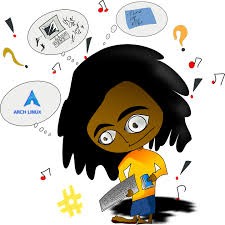I watched Episode 1 of the Russian t.v series “Minus One.” This series is about a married couple whose marriage is beginning to struggle. Though I am unsure of what city or town this series takes place in, the setting looks very similar to New York City. The streets are full of walking pedestrians and there is traffic, which is why is reminds me so much of NYC. It seems like some people travel by car and taxi, but a lot of the places these characters visited, such as the park, were all in walking distance. During this episode it is a spring or summer day considering the warm and sunny weather. I’m assuming it is sometime between May and August, considering those are when it it most warm in Russia, just like America.

I have found that this show displays a lot of similarities between Russian and American cultures, though there are slight differences. From watching the first episode, I have gathered that gender roles are put into place in Russia. The man must be chivalrous to the women and he must also be the “breadwinner,” as the man male character had said in this episode. The episode sort of portrayed women as domestic beings. In America, women stopped all being “stay at home moms,” and were allowed to get jobs for themselves decades ago. In Russia it seems like they are a few decades behind. Women still rely on their husbands income to survive. Another cultural value I noticed these characters had was the sense of family. Family is seemingly the most important thing to these people. The husband, Vasia, helps his sister financially but this angers his wife Lena.

This leads to my next topic of social/financial class. It is very important to the wife, Lena, that her family is financially stable and that their public image is upheld. When the family’s washing machine breaks, Lena is embarrassed by the fact that he husband wants to save money by hand washing the items. She fears this makes them look poor and that people will notice their children have dirty clothes. The wife is also turned off by the fact that he husband is unable to fix the machine himself, and she seeks help from another man to do the job. Her husbands lack of “hand skills,” deems him “less than.”
Also, I noticed a theme of how you are not meant to oppose your problems to other people. In Russia, you are meant to keep your problems, whether they’re marital or what have you, to yourselves. The wife often speaks of how it is “improper” to involves strangers in your business. However, in America I feel as though everything is open to asking for help and we view that value as more of a communicative idea. We believe it is good to help each other, while in Russia it is more frowned upon and deemed “embarrassing” to have to ask for help.
The final thing I noticed about the cultural aspects of Russia in this episode is that creative work is not encouraged. The husband wants to build a kindergarten, but that is too big of a financial risks and is frowned upon. Throughout this episode the wife uses the word “dreamer” negatively. She tells her daughter that she should not dream unrealistically. She also searches the internet for psychiatric  help for her husband who is a dreamer.
help for her husband who is a dreamer.
What I gathered from this episode is that America is a bit more “open” than Russia. What I mean by this is that we follow must of the same social constructs and “rules” but I feel as though our people are more free to do as they please. In America it is quite popular to break down certain barriers, like gender barriers for example, and in Russia they seem to still be in place. Russians, at least from what I’ve gathered from this t.v show, care more about what their people think of them. American culture is beginning to mold around the idea of “do whatever you want.”
 To be frank, I never thought about Twitter as an educational application. I have always viewed the app as something for teenagers to use to vent or talk to friends, etc. In hindsight, I suppose that is exactly what we are doing! We are using our Twitters to connect, not only to our fellow classmates, but to educators and professional all over the world. At first, I was truly skeptical of how using twitter would help with this class, but I have learned much more than I expected through my twitter conversations and timeline. I learned about various different apps that can be used in the classroom. I have even given someone advice on an app to use in a special needs classroom. That is what I really like about twitter. You can give and take knowledge. Someone can share a post on something they have learned or used, and through that you can become aware of something new. You can also be the one teaching others. I think it is very unique how this Twitter was integrated into our Web Tools course because I would have never thought twitter would help me learn. I have found that Twitter is such a colorful places, full of diverse educators from around the globe.
To be frank, I never thought about Twitter as an educational application. I have always viewed the app as something for teenagers to use to vent or talk to friends, etc. In hindsight, I suppose that is exactly what we are doing! We are using our Twitters to connect, not only to our fellow classmates, but to educators and professional all over the world. At first, I was truly skeptical of how using twitter would help with this class, but I have learned much more than I expected through my twitter conversations and timeline. I learned about various different apps that can be used in the classroom. I have even given someone advice on an app to use in a special needs classroom. That is what I really like about twitter. You can give and take knowledge. Someone can share a post on something they have learned or used, and through that you can become aware of something new. You can also be the one teaching others. I think it is very unique how this Twitter was integrated into our Web Tools course because I would have never thought twitter would help me learn. I have found that Twitter is such a colorful places, full of diverse educators from around the globe.
